Your Skin is Freaking Out in Winter? Here’s Exactly What to Do.
As a seasoned esthetician, I can practically set my watch by it. The first real cold snap hits, and suddenly my schedule is filled with clients whose skin has gone from happy and balanced to tight, red, and angry. They all say the same thing: “My regular products just stopped working!”
In this article
But here’s the secret: the products didn’t change. The environment did. That cold, dry air is a massive shock to the system, and your skin is basically screaming for backup. Dealing with winter skin isn’t about finding one magical, expensive cream. It’s about understanding what’s really going on with your skin barrier and making smart, strategic swaps to protect it.
And honestly, this is more than just about looking good. When your skin’s defensive wall is compromised, it can lead to frustrating sensitivity, inflammation, and even leave you more open to irritation. My goal here is to cut through the noise and share the practical techniques that actually work, so your skin can stay comfortable and healthy all winter long.

Why Your Skin Hates Winter (The Simple Science)
To win the battle, you have to know your enemy. Your skin has this amazing protective layer I like to call its “brick-and-mortar wall.” The “bricks” are your skin cells, and the “mortar” holding them together is a mix of natural fats (lipids) like ceramides and cholesterol. This wall is designed to keep the good stuff (moisture) in and the bad stuff (irritants) out.
In winter, this wall takes a serious beating from three sides:
- The Great Moisture Heist: The biggest issue is dry air—both outside in the freezing cold and inside from your cranked-up central heating. It’s simple physics: moisture moves from where there’s more of it to where there’s less. So, the dry air literally starts pulling water directly out of your skin. There’s a fancy term for this, Transepidermal Water Loss (TEWL), but all you need to remember is that the air is stealing your skin’s hydration, leaving it looking dull and creating fine lines.
- Crumbling Mortar: That harsh combo of cold wind and dry air also starts to strip away the fatty “mortar” in your skin barrier. When the mortar crumbles, tiny, invisible cracks form in your wall. This is a double-whammy: even more water gets out, and irritants like pollution can now sneak in. It’s why so many people suddenly get red and reactive in the winter.
- Sluggish Delivery Service: Your body is smart. When it gets cold, it narrows the blood vessels in your skin to keep your core warm. Great for survival, not so great for your complexion. Less blood flow means fewer nutrients and less oxygen get delivered to your skin’s surface, making it look dull and slowing down its natural repair cycle.
So, our entire winter game plan is built around solving these three problems. It’s all about hydrating, repairing the wall, and sealing it all in.

Your Winter Skin Type Isn’t Your Summer Skin Type
So many of us get attached to a skin type—maybe you were told you had “oily” skin as a teen and you’ve stuck with it. But your skin is a living organ that adapts. The person with oily skin in July might have perfectly normal skin in December. And if you have normal skin in the summer? You’re probably dealing with genuinely dry, tight skin right now.
Instead of guessing, learn to read the signs:
- Truly Dry Skin: This is a lack of oil. It feels rough, might have visible flaky patches, and rarely gets shiny. It screams for moisture right after you wash it.
- Dehydrated Skin: This is a lack of water. And here’s the kicker: even oily skin can be dehydrated! It looks dull and might show tiny, crepey lines. It’s that confusing feeling of being both tight and a bit greasy at the same time.
- Sensitized Skin: This is a red flag that your barrier is damaged. Products might sting, your face feels irritated, and you’re suddenly reacting to things that were fine a month ago.
A good rule of thumb? For the winter, treat your skin as if it’s one step drier and more sensitive than it is in the summer. That mental shift is everything.
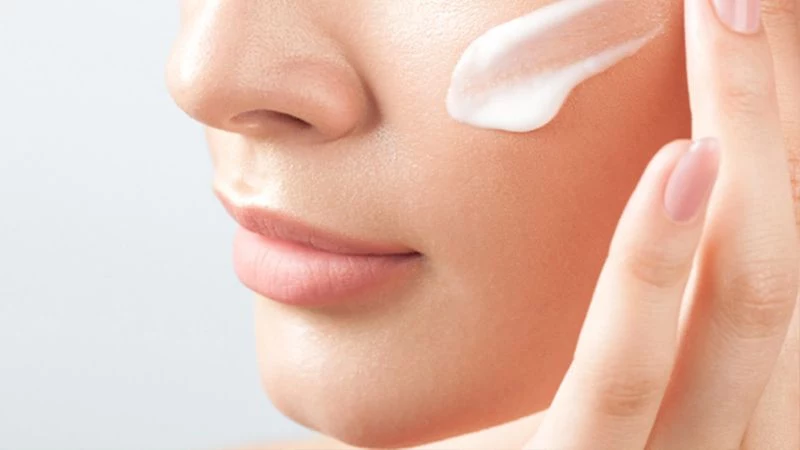
The Ultimate Winter Skincare Routine: Step-by-Step
Okay, let’s get into the good stuff. A solid winter routine is about adding protection and swapping out a few key products. We’re going to focus on gentle cleansing, layering hydration, and then locking it all down.
Step 1: The Gentle Cleanse
This is the most common mistake I see. Continuing to use a foaming or gel cleanser from summer is a huge no-no. That “squeaky clean” feeling is actually the sound of your skin’s protective oils being stripped away, making your barrier weaker.
Pro-Tip: Switch to a cleansing milk, cream, balm, or oil. These dissolve makeup and grime without wrecking your skin’s lipid barrier. If you’re feeling lost in the aisle, check out the La Roche-Posay Toleriane Hydrating Gentle Cleanser (around $17 at Target or drugstores) or, for a more luxurious feel, a balm like the Then I Met You Living Cleansing Balm (about $38 online). Both are fantastic and won’t strip your skin.
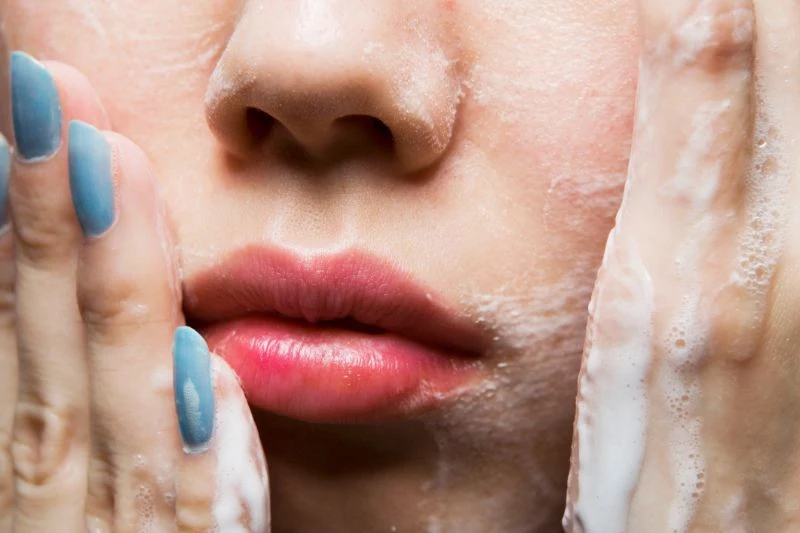
Heads up! Never, ever use hot water on your face. It feels nice for a second, but it literally melts your skin’s natural fats and sends them down the drain. Stick to lukewarm water at the sink.
Feeling overwhelmed? If you only do ONE thing from this list, make it this. This single swap stops the daily assault on your skin’s barrier and is a super affordable fix.
Step 2: Layer Up the Hydration
Forget those old-school, alcohol-based toners that sting. Modern hydrating toners and essences are your best friends. They are watery lotions packed with humectants—ingredients that grab onto water and pull it into your skin.
The key here is layering. After cleansing, while your skin is still a little damp, pour a dime-sized amount of toner into your palm, and gently press it into your skin. Don’t waste product on a cotton pad! Wait a moment for it to sink in, then do it again. Two or three light layers will flood your thirsty skin cells with water.
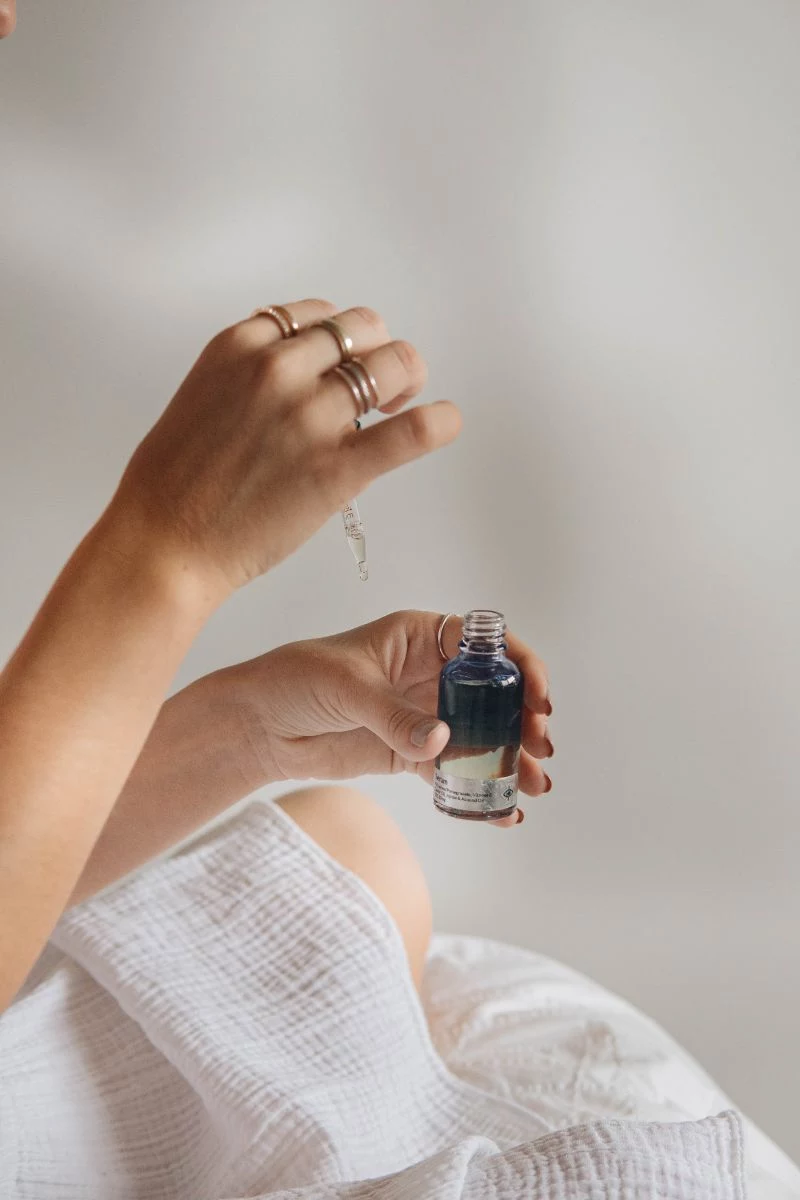
Step 3: Target with a Serum
A serum is your concentrated problem-solver. In winter, you want one that focuses on repairing that brick-and-mortar wall and calming down redness.
- For Barrier Repair: Niacinamide (Vitamin B3) is a total superstar. It’s proven to boost your skin’s natural fat production and reduce redness. I recommend it to almost everyone in the winter.
- For Soothing: Look for ingredients like Panthenol, Madecassoside, or Green Tea to calm irritation from the cold.
- A Quick Word on Vitamin C: If you love your potent Vitamin C serum, but it’s starting to sting, your barrier is telling you to back off. Consider switching to a gentler form (like THD Ascorbate) or just skipping it in the morning in favor of a soothing, repair-focused serum.
Step 4: Your Winter Shield (aka Moisturizer)
Your winter moisturizer has to be more than just hydrating; it needs to be a security guard. A great one has a mix of ingredients that draw water in, soften the skin, and—most importantly—form a seal to stop that moisture from escaping.
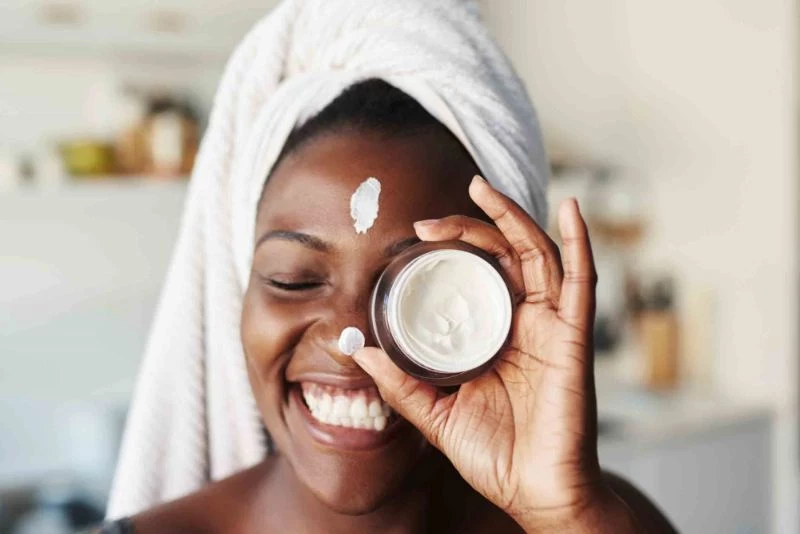
In practice, this means you need to switch to a richer cream. For example, if you love the lightweight Neutrogena Hydro Boost Water Gel in the summer, you’ll want to swap to something more substantial like the classic CeraVe Moisturizing Cream (a drugstore hero for under $20) or the Kiehl’s Ultra Facial Cream. Don’t be afraid of ingredients like petrolatum or dimethicone! They get a bad rap online, but they are some of the best and safest ingredients for creating that protective seal. They’re a dermatology staple for a reason.
Step 5: Sunscreen. Yes, Still.
This is the non-negotiable rule. I say it every year. The aging UVA rays are just as strong in December as they are in July, and they go right through clouds and car windows. Oh yeah, and if you’re around snow, it can reflect up to 80% of UV rays back at you, so you’re getting hit from above and below. Just wear it. An SPF of 30 or higher, every single day.
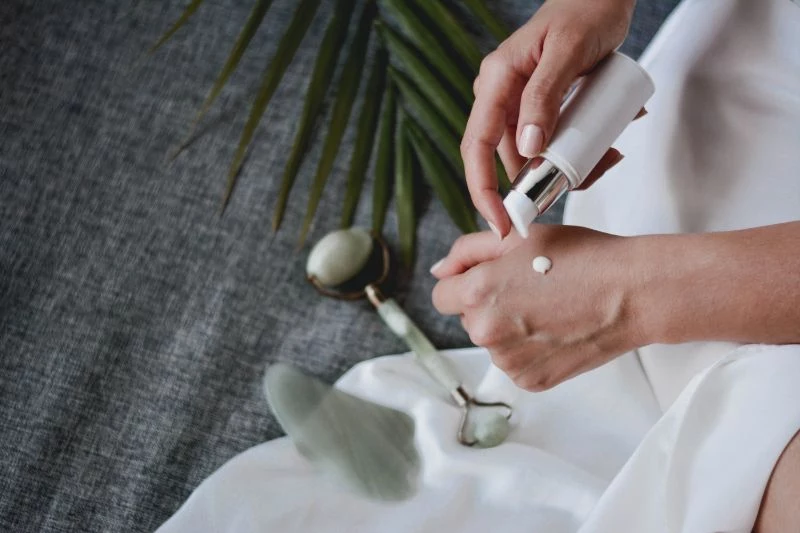
Quick Guide: Your Winter Skincare Swaps
To make it simple, here are the key trades you should be making as the temperature drops:
- SWAP Your: Foaming or Gel Cleanser
FOR A: Cream, Milk, or Balm Cleanser - SWAP Your: Harsh Physical Scrub or Strong Glycolic Acid
FOR A: Gentle PHA or Lactic Acid Exfoliant (and use it less often!) - SWAP Your: Lightweight Gel Moisturizer
FOR A: Richer Cream with Ceramides or Shea Butter - SWAP Your: Potentially Irritating Actives
FOR: Soothing, Barrier-Repairing Serums (like Niacinamide)
Level Up: Advanced Winter Skin Savers
Once your daily routine is solid, you can add a few extras to really nail it.
- Exfoliation (The Gentle Way): When skin gets flaky, the urge to scrub it off is strong. Please, don’t. Those flakes are a sign of a damaged barrier, and aggressive scrubbing is like taking a sandblaster to it. Instead, switch to a super gentle chemical exfoliant once or twice a week, max. Look for Polyhydroxy Acids (PHAs) or a low-strength Lactic Acid—they exfoliate while also hydrating.
- Night-Time Rescue (Slugging): For seriously dry or wind-chapped skin, try a technique called “slugging.” After your entire nighttime routine, apply a very thin layer of a simple occlusive like Vaseline, Aquaphor, or CeraVe Healing Ointment. It creates a seal that dramatically reduces water loss overnight, letting your skin heal. It’s an old-school trick that just works.
- What About Retinoids?: If you use a strong retinoid like tretinoin, winter can be rough. A great way to continue without turning into a flaky, irritated mess is the “sandwich technique.” Apply a thin layer of simple moisturizer, wait for it to absorb, apply your retinoid, wait again, and then apply another layer of moisturizer on top. It acts as a buffer and makes a world of difference.
- Eyes & Lips: This skin is extra thin and vulnerable. Use a dedicated, rich eye cream, and for your lips, find a balm with protective ingredients like lanolin or shea butter. Apply it constantly.

The Other Half of the Battle
You can have the best products, but if your environment is fighting you, you’ll always be playing catch-up.
My number one tip? Get a humidifier. This is the single best thing you can buy for your skin, hair, and sinuses in the winter. A cool-mist ultrasonic one from Amazon or Target will run you about $40-$60 and is a total game-changer. Run it in your bedroom at night to keep the air from getting bone-dry.
Also, don’t forget to wear a soft scarf over your face when you’re outside, and eat healthy fats like those found in fish, avocados, and walnuts to support your skin barrier from the inside out.
A Final Reality Check
Let’s be real, a good routine doesn’t have to take forever. This whole process should only take about 5 minutes in the morning and maybe 7-8 at night. You should start to feel less tightness in just a few days, and you’ll likely see a visible reduction in redness and flakes within 2-3 weeks.

Of course, while this advice can solve most common winter skin woes, it’s important to know when to call a pro. (Disclaimer: I’m an esthetician sharing educational advice, not a medical doctor.) If you’re dealing with persistent eczema, rosacea, or any skin that’s cracking or weeping, it’s time to see a dermatologist for prescription-strength help.
Winter skincare is really a practice of being kind to your skin. By shifting from attacking problems to gently protecting and nurturing, you can keep your skin calm, glowing, and comfortable, no matter how low the temperature drops.
Inspirational Gallery

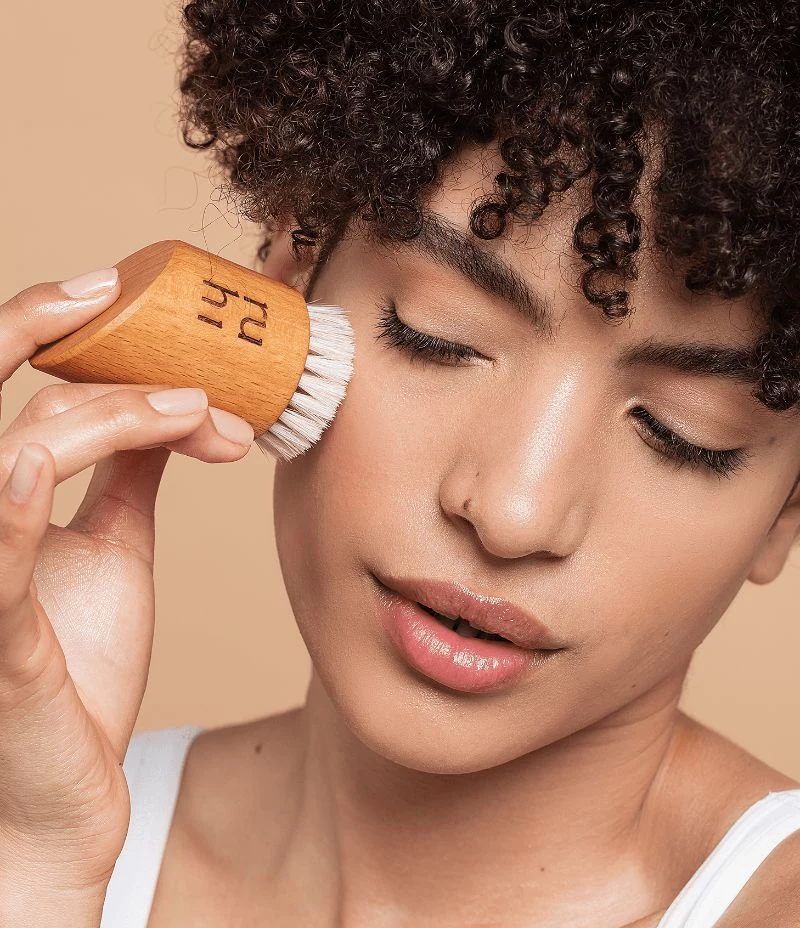
- Less post-shower tightness and itchiness.
- Your moisturizer absorbs better, not just sitting on top.
- A noticeable reduction in redness and flakiness.
The secret? Your water temperature. That long, steaming hot shower feels divine, but it’s a major culprit in stripping your skin’s natural oils. Try turning the dial to lukewarm—your skin barrier will thank you for it all winter long.
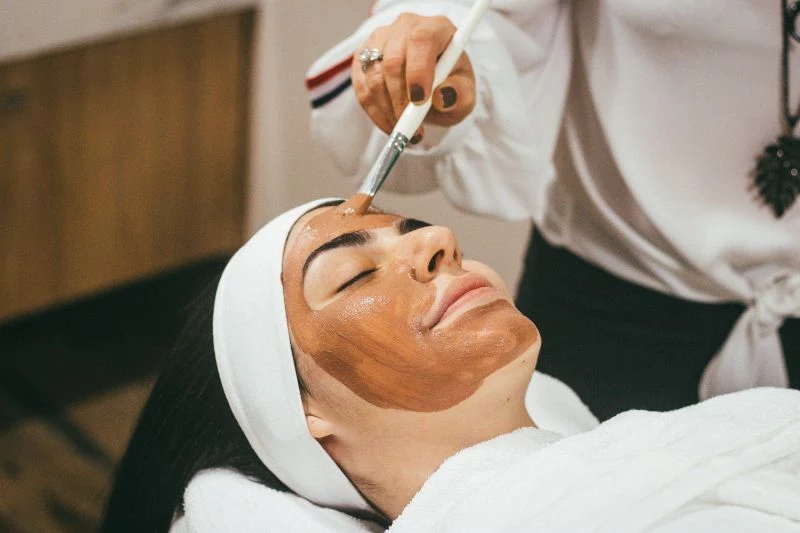
Is my foaming cleanser secretly sabotaging my skin this winter?
It might be. If your face feels squeaky clean or tight after washing, your cleanser is likely too harsh for the season and is stripping your lipid barrier. Consider a “winter swap” to a gentler, more nourishing option. Creamy, milky, or balm cleansers, like the iconic La Roche-Posay Toleriane Hydrating Gentle Cleanser, remove impurities without disrupting your skin’s delicate moisture balance.
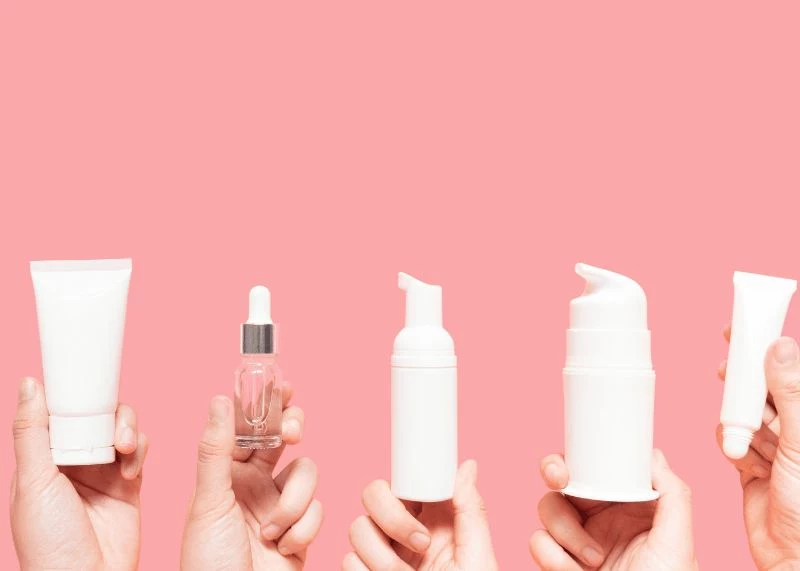
A single molecule of Hyaluronic Acid can hold up to 1,000 times its weight in water.
But there’s a catch: in dry winter air, it can pull moisture from the deeper layers of your skin, making dehydration worse. The pro move is to always apply your hyaluronic acid serum (like The Ordinary’s Hyaluronic Acid 2% + B5) to damp skin and immediately lock it in with a thicker moisturizer on top. This ensures it draws moisture into your skin, not out of it.
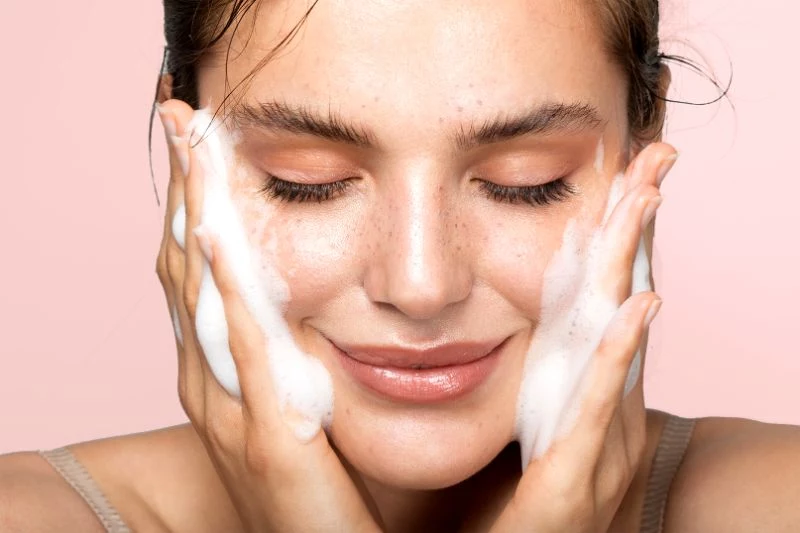
Your winter skincare arsenal should feel as comforting as it is effective. Think less about watery gels and more about rich, cocooning textures. This is the season for buttery balms, silky oils, and thick creams that feel like a protective hug for your face. It’s not just about hydration; it’s about the sensory ritual of massaging in a product like Weleda Skin Food, creating a moment of calm and a shield against the cold.
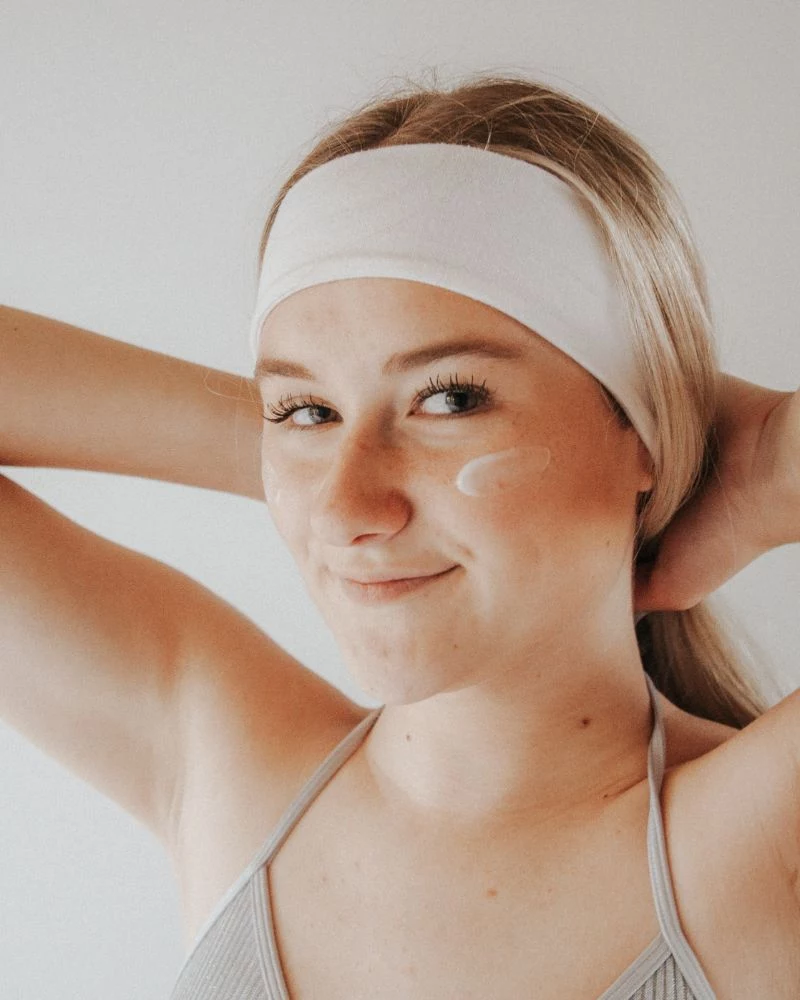
Go-To Ingredient Checklist for Winter:
- Squalane: A non-greasy, biomimetic oil that locks in moisture and repairs the skin barrier.
- Panthenol (Pro-Vitamin B5): A powerful humectant and anti-inflammatory that soothes redness.
- Shea Butter: An emollient rich in fatty acids and vitamins, perfect for sealing cracks in dry skin.
- Glycerin: A classic, affordable humectant that pulls moisture into the top layer of the skin.
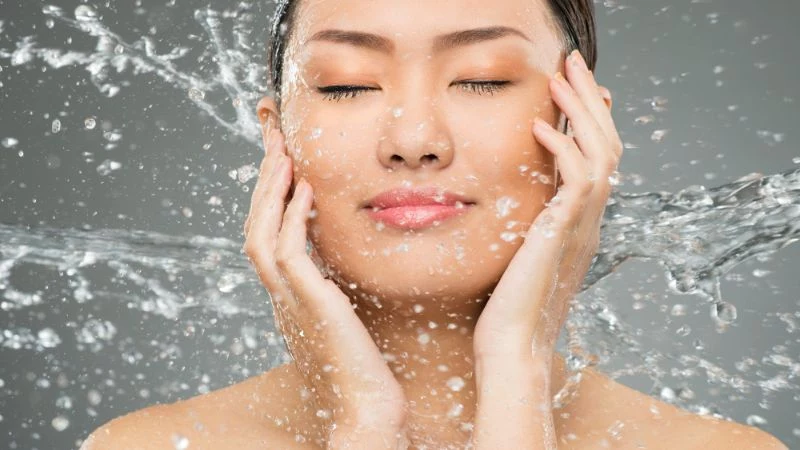
Barrier Repair: Splurge vs. Save
Splurge: SkinCeuticals Triple Lipid Restore 2:4:2. This cream is the gold standard for a reason, with a patented ratio of ceramides, cholesterol, and fatty acids that precisely mimics the skin’s own barrier. It’s a heavy-hitter for seriously compromised skin.
Save: Avène Cicalfate+ Restorative Protective Cream. A French pharmacy hero, its combination of C+ Restore™, copper, and zinc sulfates creates a ‘bandage effect’ that calms intense irritation and promotes healing for a fraction of the price.
Both are fantastic; your choice depends on your budget and how severely your skin is acting up.

The biggest winter mistake: Over-exfoliating. When skin looks dull, it’s tempting to reach for a strong acid or scrub. In winter, this is like taking a pickaxe to your already crumbling brick-and-mortar wall. Limit exfoliating acids (like glycolic or salicylic) to once a week at most, and consider switching to a gentler option like lactic acid or a very mild enzyme peel to avoid stripping your fragile skin.

Don’t forget your lips! The skin here is incredibly thin and has no oil glands of its own, making it the first victim of cold, windy weather.

The latest trend for fighting extreme dryness is ‘slugging,’ and it’s simpler than it sounds. After your entire evening skincare routine, you apply a very thin layer of an occlusive ointment, like classic Vaseline or CeraVe Healing Ointment. This creates a seal that prevents water loss overnight, allowing your skin to heal and repair itself. You’ll wake up to surprisingly soft, plump skin. It’s a game-changer for the driest winter days.
Create a quick SOS calming mask right from your pantry. Oats are renowned for their soothing, anti-inflammatory properties.
- Mix 2 tablespoons of colloidal oatmeal (or finely ground regular oats).
- Add 1 tablespoon of manuka honey (for its antibacterial and hydrating benefits).
- Stir in a splash of lukewarm water or full-fat yogurt to form a paste.
Apply to a clean face for 10-15 minutes to instantly reduce redness and calm irritation.










